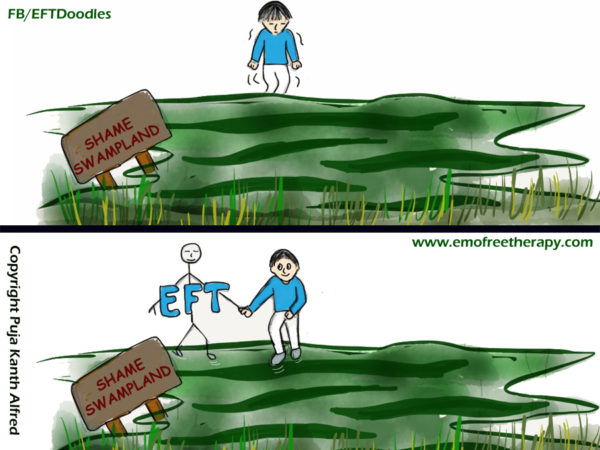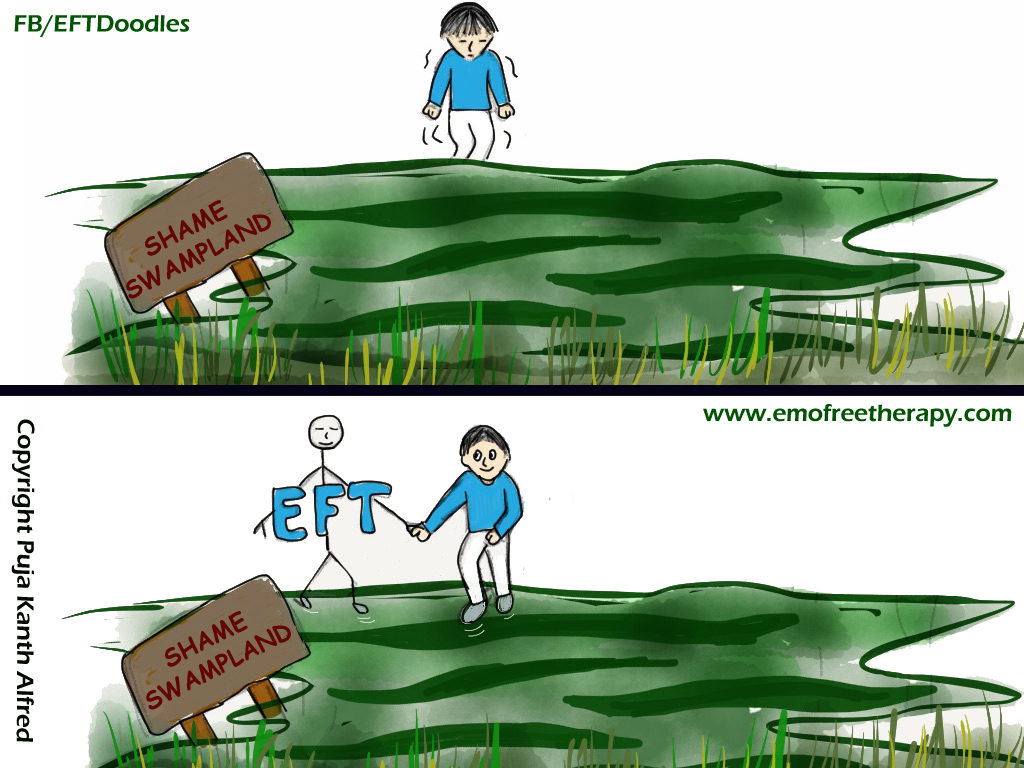
Crossing the Shame Swampland
I really like Brene Brown’s work. In her book, The Gifts of Imperfection, Brene Brown says
“In Jungian circles, shame is often referred to as the swampland of the soul. I’m not suggesting that we wade out into the swamp and set up camp. I’ve done that and I can tell you that the swampland of the soul is an important place to visit, but you would not want to live there. What I’m proposing is that we learn how to wade through it. We need to see that standing on the shore and catastrophisizing about what could happen if we talked honestly about our fears is actually more painful than grabbing the hand of a trusted companion and crossing the swamp. And, most important, we need to learn why constantly trying to maintain our footing on the shifting shore as we gaze across to the other side of the swamp—where our worthiness waits for us—is much harder work than trudging across.”

Here’s how we can work on shame with EFT.
Understanding Shame
First and foremost understanding shame is a good place to start.
What is shame?
“Shame is the intensely painful feeling or experience of believing that we are flawed and therefore unworthy of love and belonging.”( Brown, 2013)
“Shame is a form of anger that arises when your boundaries have been broken from the inside – by something you’ve done wrong, or have been convinced is wrong.” (McLaren, 2010)
So putting it simply, the difference between guilt and shame is:
Guilt is when we feel we ‘did’ something wrong. It’s about an action. Shame is when we feel ‘we’ are wrong as a person.
Make EFT your companion and talk honestly about your fears while tapping.
With EFT you can cross the shame swampland
a) Accept what you feel truly feel
Even though I feel ashamed, I accept myself and this feeling of shame.
b)Tap on all the Catastrophic thoughts – What will happen if you allow the feeling of shame to come up? Tap on all the worst case scenarios in your head about allowing this feeling. Example – You might feel that if you allowed yourself to feel the shame, you would feel overwhelmed and unable to cope with it.
Even though I might be overwhelmed if I allow this feeling to come up, I deeply and completely accept myself and how I feel.
c) Make a Shame List – Make a list stating all the incidents in the past that make you feel ‘shame’ and tap on them.
d) Perfectionism
“Brene Brown talks about practising ‘critical awareness by reality-checking the messages and expectations that tell us that being imperfect means being inadequate.’
Since perfectionism is tied to shame, check all the triggers related to this. For example – Do you feel inadequate when you haven’t done things ‘perfectly’? Tap on all the unrealistic expectations that you have and release the feeling of inadequacy and shame.
e) Developing Shame Resilience
“Shame resilience is the ability to recognize shame, to move through it constructively while maintaining worthiness and authenticity, and to ultimately develop more courage, compassion, and connection as a result of our experience. “ ( Brown, 2013)
Some tapping statements that can help you develop shame resilience.
Even though I feel ashamed, I would like to develop courage to move through it and let it flow easily through me.
Even though I feel shame, I choose to have compassion for myself in this process of letting it move through me.
Even though I feel shame and it makes me want to distance myself from myself and others, I want to develop authentic connection with myself and others as I let it flow through me.
References:
The Gifts of Imperfection by Brene Brown
Language of Emotions by Karla McLaren
